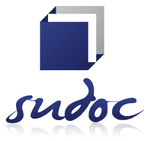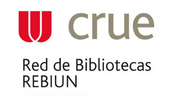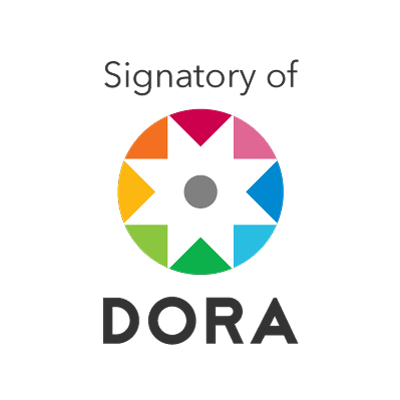A landscape of scentes and perfumes: the seduction of smell according to medieval and early modern sources and practices
DOI:
https://doi.org/10.46553/EHE.27.1.2025.p1-11Keywords:
Late Middle Ages, Recipe books, Perfumery, Technical knowledge, CosmeticsAbstract
The contributions in this dossier are structured around three main themes related to the idea of the seduction of smell. The first focuses on the use of scents in medicine and hygiene, particularly to combat pestilence and purify the air. The second theme is dedicated to the fascination with odors as a creative and innovative stimulus, whether in technical or artistic contexts. The third highlights the powerful effects of perfumes in the realm of spirituality and devotion.
In recent years, the body has regained prominence in historical research, leading to a renewed interest in the sensory aspects of past societies and giving rise to the field of sensory studies. Exploring the sensations of historical subjects is both compelling and relevant, as these are not mere intellectual abstractions but lived experiences. They can show us how societies have used the senses to organize and integrate their members. Sensory frameworks are analyzed either holistically or individually, and some senses have received more scholarly attention than others. For a long time, smell was a neglected sense in historical studies—perhaps due to its subtlety, the fleeting nature of olfactory evidence, or a cultural disdain rooted in the belief that scent belongs to the realm of vanity. Indeed, smell has been placed at the lowest level of the sensory hierarchy, as demonstrated by Anthony Synnott. Yet from the incense of the mass, funeral rites, and the aromas of food to bodily perfumes, smell is omnipresent and essential for understanding the social bonds within a culture. Odors are perceived through cultural filters and provoke sensations that arise from social construction.
Downloads
References
ALBERT, Pierre, Odeurs de sainteté. La mythologie chrétienne des aromates, Paris, Éditions de l’EHESS, 1990.
ANÓNIMO, Libro del Tesoro. Girona, Catedral 20a5, Dawn Prince, Hispanic Seminary of Medieval Studies (Madison), 1990, folio 66v.
BODDICE, Rob y SMITH, Mark, Emotion, Sense, Experience, Cambridge, Cambridge University Press, 2020.
CABRÉ i PAIRET, Montserrat y LÓPEZ RIDER, Javier, “Medicina y masculinidad: el cuidado de la barba en los recetarios domésticos castellanos del siglo XVI”, Dynamis, 43(1), 2023, 123-158.
CABRÉ i PAIRET, Montserrat, “Cosmética y perfumería”, en Luis García Ballester (dir.), Historia de la ciencia y de la técnica en la Corona de Castilla. I-II, Edad media, Valladolid, Junta de Castilla y León, 2002, 773-779.
CLASSEN, Constance, HOWES, David y SYNNOTT, Anthony, Aroma: The Cultural History of Smell, New York, Routledge, 1994.
CLASSEN, Constance, Worlds of Sense. Exploring the Senses in History and across Cultures, London, Routledge, 1993.
CORBIN, Alain, Le miasme et la jonquille. L'odorat et l'imaginaire social, XVIII-XIX siècles, Paris, Aubier, 1982.
COUDERC, Grégory, “Le parfum du Moyen Âge au XVIIIe siècle dans les collections du Musée International de la Parfumerie”, Artefact, 1, 2014, 223-227.
CRIADO VEGA, Teresa, “Las artes de la paz. Técnicas de perfumería y cosmética en recetarios castellanos de los siglos XV y XVI”, Anuario de Estudios Medievales, 41(2), 2011, 865-897.
de SAN ROMÁN, Rafael Sancho (ed.), Tres escritos sobre pestilencia del Renacimiento español. Fernando Álvarez. Diego Álvarez Chanca. Licenciado Fores, Salamanca, Real Academia de Medicina de Salamanca-Instituto de Historia de la Medicina Española, 1979.
DIEZ JORGE, María Elena, Sentir la casa. Emociones y cultura material en los siglos XV y XVI, Gijón, Trea, 2022.
DUGAN, Holly E., The Ephemeral History of Perfume: Scent and Sense in Early Modern England, Dissertation submitted in partial fulfillment of the requirements for the degree of Doctor of Philosophy, Université of Michigan, 2005.
GUIANCE, Ariel, “El olor de santidad: la caracterización y alcance de los aromas en la hagiografía hispana medieval”, Edad Media: revista de historia, 10, 2009, 131-161.
HOWES, David y CLASSEN, Constance, Ways of Sensing. Understanding the senses in society, Londres, Routledge, 2014.
HOWES, David, “Afterword. The Sensory Revolution Comes of Age”, The Cambridge Journal of Anthropology, 39 (2), 2021, 128-137.
JIMÉNEZ SÁNCHEZ, Juan Antonio, “En olor de santidad: la actitud del cristianismo hacia la cultura del baño”, Polis: revista de ideas y formas políticas de la antigüedad clásica, 18, 2006, 151-161.
KUKSO, Federico, Odorama: Historia cultural del olor, Buenos Aires, Taurus, 2020.
LECUPPRE-DESJARDIN, Élodie (dir.), L’odeur du sang et des roses. Relire Johan Huizinga aujourd’hui, Lille, Presses universitaires du Septentrion, 2019.
LEVEQUE AGRE, Isabelle, “Les parfums à la fin du Moyen Age: Les différentes formes de fabrication et d´utilisation”, en Les soins de beauté. Moyen Âge, début des temps modernes. Actes du IIIe Colloque International Grasse (26-28 avril, 1985), Niza, Université de Nice, 1987, 135-145.
LÓPEZ RIDER, Javier y GIRÓN PASCUAL, Rafael María, “Trading Beauty. Commerce and Cosmetic Recipes in Medieval and Early Modern Ages”, en Javier López Rider (eds.), The Search for Wellbeing and Health between the Middle Ages and Early Modern Period, Oxford, Archaeopress, 2023, 46-63.
LÓPEZ RIDER, Javier, “Fabricación y uso de cosméticos en los recetarios hispanos de los siglos XV-XVI”, en Gisela Coronado Schwindt y María Agustina Vaccaroni (dirs.), Mundos hispánicos: historia, cultura, patrimonio, Buenos Aires, Fundación para la Historia de España, 2023, 373-396.
PARAVICINI BAGLIANI, Agostino (ed.), Parfums et odeurs au Moyen Age. Science, usage, symboles, Firenze, Sismel Edizioni del Galluzzo, 2025.
PÉREZ, Stanis “L’eau de fleur d’oranger à la cour de Louis XIV”, Artefact, 1, 2014, 107-115.
REDDY, William M., The Navigation of Feelings. A Framework for the History of Emotions, Cambridge: Cambridge, University Press, 2001.
REINARZ, Jonathan, Past Scents. Historical Perspectives on Smell, Chicago and Springfield, University of Illinois Press, 2014.
ROBINSON, Katelynn, The Sense of Smell in the Middle Ages: A Source of Certainty, Londres-New York, Routledge, 2020.
ROCH, Martin L’intelligence d’un sens: odeurs miraculeuses et odorat dans l’Occident du haut Moyen Âge (Ve–VIIIe siècles), Turnhout, Brepols, 2009.
ROSENWEIN, Barbara H. y CRISTIANI, Riccardo, What is the History of Emotions?, Cambridge, Polity Press, 2017.
RUIZ VEGA, Paloma, “Alcanfor, almizcle y ámbar gris, remedios aromáticos en farmacia y medicina de al-Andalus”, Estudios sobre patrimonio, cultura y ciencias medievales, 18 (3), 2016, 1165-1180.
SMITH, Mark, A Sensory History Manifesto, Pennsylvania, The Pennsylvania State University Press, 2021.
STEARNS, Peter N. y STEARNS, Carol Z., “Emotionology: Clarifying the History of Emotions and Emotional Standards”, American Historical Review, 90 (4), 1985, 813-836.
SYNNOT, Anthony, A sociology of Smell, Londres, Routledge, 1991.
TRAITÉ, Javier y SANZ de BREMOND, Consuelo El olor de la Edad Media. Salud e higiene en la Europa medieval, Barcelona-Madrid, Ático de los libros, 2024.
TULLETT, William Smell and the Past. Noses, Archives, Narratives, London, Bloomsbury, 2023.
VEGAS SOBRINO, Laura y VIÑAS TORRES, María Teresa, “Perfumadores, fruteros y confiteros: recipientes para exhibir el lujo sensorial entre la nobleza castellana del siglo XV”, Anales de Historia del Arte, 24, 2014, 577-592.
WALKER BYNUM, Caroline, ¿Por qué tanto alboroto por el cuerpo? La perspectiva de una medievalista, Madrid, Sans Soleil Ediciones, 2022.
Downloads
Published
How to Cite
Issue
Section
License
Copyright (c) 2025 Julia Roumier y Gisela Coronado Schwindt

This work is licensed under a Creative Commons Attribution-NonCommercial-ShareAlike 4.0 International License.


































 Estudios de Historia de España
Estudios de Historia de España